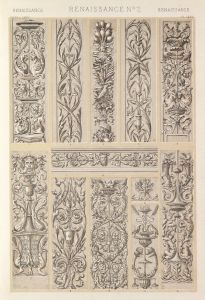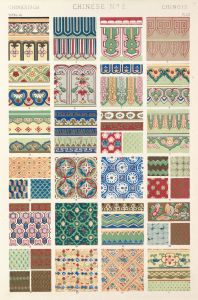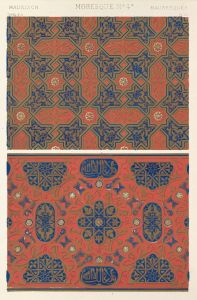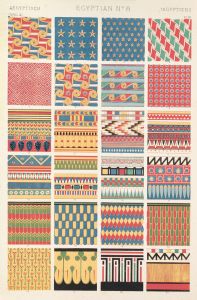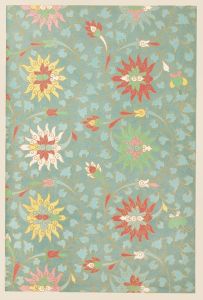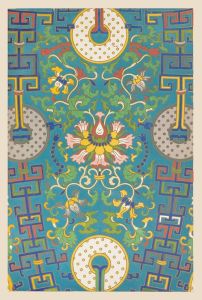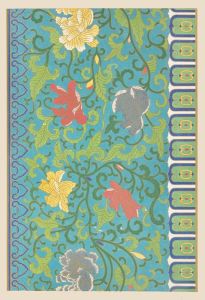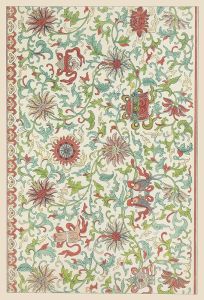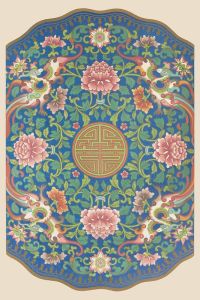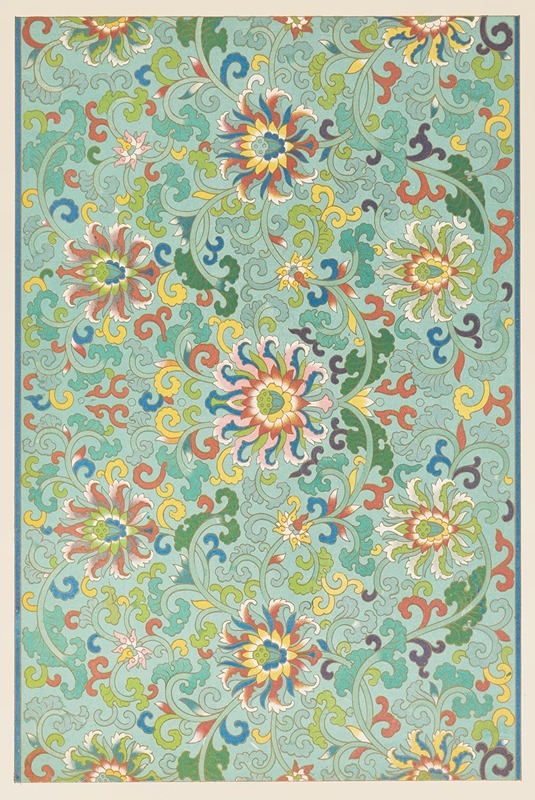
Examples of Chinese ornament, Pl.71
A hand-painted replica of Owen Jones’s masterpiece Examples of Chinese ornament, Pl.71, meticulously crafted by professional artists to capture the true essence of the original. Each piece is created with museum-quality canvas and rare mineral pigments, carefully painted by experienced artists with delicate brushstrokes and rich, layered colors to perfectly recreate the texture of the original artwork. Unlike machine-printed reproductions, this hand-painted version brings the painting to life, infused with the artist’s emotions and skill in every stroke. Whether for personal collection or home decoration, it instantly elevates the artistic atmosphere of any space.
"Examples of Chinese Ornament, Pl.71" is a work by Owen Jones, a prominent British architect and designer known for his contributions to the theory of design and his influential publications in the 19th century. This particular piece is part of his seminal work, "The Grammar of Ornament," first published in 1856. The book is a comprehensive collection of design patterns and motifs from various cultures around the world, serving as a reference for designers and architects of the time.
Owen Jones was deeply influenced by his travels and studies of different cultures, and "The Grammar of Ornament" reflects his appreciation for the diversity and richness of global decorative arts. The book is divided into several chapters, each focusing on a different cultural or historical style, including Egyptian, Persian, Greek, Roman, and Chinese, among others. The section on Chinese ornamentation showcases the intricate and symbolic designs characteristic of Chinese art.
Plate 71 specifically highlights examples of Chinese ornamentation, illustrating the unique aesthetic principles and motifs found in Chinese decorative arts. Chinese ornamentation is known for its use of symbolic imagery, often incorporating elements from nature, mythology, and traditional Chinese philosophy. Common motifs include dragons, phoenixes, clouds, and floral patterns, each carrying specific meanings and associations within Chinese culture.
Jones's depiction of Chinese ornamentation in Plate 71 captures the elegance and complexity of these designs. The illustrations are characterized by their vibrant colors and intricate patterns, reflecting the traditional techniques used in Chinese art forms such as porcelain, textiles, and architectural decoration. The use of symmetry, balance, and repetition in these designs exemplifies the harmony and order valued in Chinese aesthetics.
"The Grammar of Ornament" was groundbreaking in its approach to design education, advocating for the study and appreciation of historical and cultural design principles. Jones emphasized the importance of understanding the underlying principles of design rather than merely copying existing patterns. His work encouraged designers to draw inspiration from a wide range of sources, promoting a more global perspective on design.
Owen Jones's exploration of Chinese ornamentation in Plate 71 and throughout "The Grammar of Ornament" played a significant role in introducing Western audiences to the beauty and sophistication of Chinese decorative arts. His work contributed to a greater appreciation and understanding of non-Western art forms during a time when Western art and design were heavily influenced by classical European traditions.
Overall, "Examples of Chinese Ornament, Pl.71" is a testament to Owen Jones's vision of a universal language of design, where the beauty and ingenuity of different cultures are celebrated and integrated into a broader understanding of art and aesthetics. His work continues to be a valuable resource for designers, historians, and anyone interested in the rich tapestry of global decorative arts.





